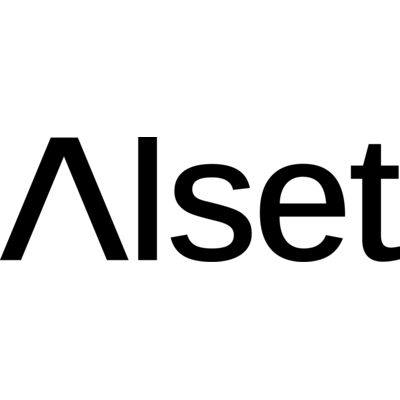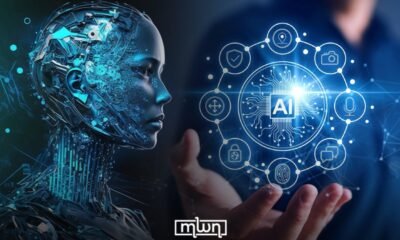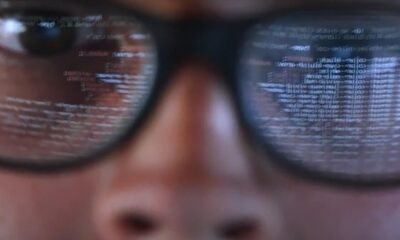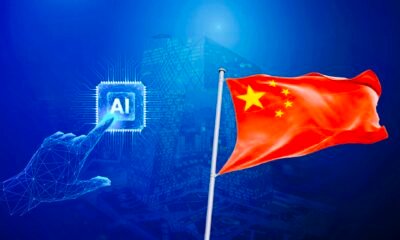identifeye HEALTH has launched its retinal screening platform. The platform is a compact, app-based system that is FDA-registered under a 510(k)-exempt classification. The company is initiating pilot programs with health systems and community-based providers.1
The system is designed for point-of-care environments, allowing nurses and medical assistants to capture high-quality retinal images with minimal training. The company has stated that the identifeye Camera can help to lower common barriers to screening, including time constraints, cost, and limited specialist availability.1 The goal is to help triage patients who need specialist care while reducing bottlenecks in the healthcare system.
With the announcement of this news, Modern Retina had the opportunity to speak with Vicky Demas, CEO of identifeye HEALTH to discuss how this advancement in technology can benefit patients and ophthalmologists. Demas is an engineer by training who has spent the last 25 years working at the conjunction of technology and healthcare.
The conversation discussed not only the identifeye Camera and retinal imaging platform, but also how technology and AI has the power to transform the field of ophthalmology and positively impact other areas of healthcare and research.
Note: The following conversation has been lightly edited for clarity.
Modern Retina: There’s been some recent news with identifyee HEALTH. What are the updates with the company and what are the plans for the future?
Vicky Demas: Yes, we’re super excited. We [identifeye HEALTH] formally registered with the FDA earlier in July. As part of that, we can formally market the device in the US. We’re speaking with major health systems to secure placements pilots. Really exciting for the team, especially, and we’re out doing community screenings. We’re partnering with organizations, returning results to patients who otherwise wouldn’t have been able to get their vision checked. We’re super excited to be making impact, learning from the field, and figuring out how we can make this a scalable solution.
MR: Can you speak to the technology and what ophthalmologists should know about what’s coming down the line in this field?
Demas: I am an engineer by training, but I’ve spent the last 25 years working at that interface of tech and healthcare life sciences, which is relevant to identifeye asI was part of the team at Google, actually Google X, that started the Life Sciences Initiative. The goal was to leverage AI and Google infrastructure to solve problems worth solving in healthcare and life sciences. Part of that incredible job I had was to work with industry experts to figure out what those problems should be, and build teams to execute proof of concept, joint ventures, etc. That was when I was introduced to the concept of the eye as a window into the body and health, and the potential of the platform to, not only look at ophthalmic diseases in the retina, but also systemic disease in a very scalable way.
I left the space, worked in cancer diagnostics, and when I came back to work on what is now identifeye HEALTH, it was really striking to me that, while there is a ton you can do with AI and image segmentation, annotation, etc., people had overlooked the importance of capturing with ease, a high quality retinal image in a general setting, which has been our focus that identifeye is leveraging AI and automation to make capturing retinal images, I say, as simple as measuring someone’s blood pressure, so it can actually happen closer to patients. So that’s the biggest innovation with our platform, and what we’re really excited to do is now a medical assistant, administrative person in your office can, without a ton of training, capture high quality images.
The device will also check with AI that the image quality is appropriate to be interpreted, whether by a human or an algorithm in the future. It is the high level of what the product does. Our general approach, is that we’re looking to figure out how to integrate into workflows and help triage patients to specialty care as they’re needed, not to substitute, but to make it accessible. We want figure out how to make sure that patients who should see an ophthalmologist see an ophthalmologist, but those who don’t, don’t bottleneck the system, don’t get inconvenienced.
MR: Where do you see this technology being implemented or the potential to be implemented?
Demas: We’re certainly thinking settings closer to patients. For example, primary care would be a good place. Retail pharmacies, they’re expanding to be able to really create services around healthcare, primary care. The focus is to be accessible ,closer to patients, making screening more convenient, and whether, as we’re doing now with a tele-retinal service or with AI automating the report back to the clinician for help assessing and helping the patient stay on top of their health.
MR: When we talk about the potential of AI to play a role in this, how do you think that the landscape of AI overall will play into healthcare in this role and in other roles?
Demas: Tt’s been a long time in the making, right? I think of AI will start with anything from the simple things like building classifiers to automate repetitive tasks that humans aren’t great at, like. Even self-concordance is not looking great, so AI can certainly start doing a lot more of that, allowing, clinicians, to do more things that they’re uniquely qualified to do.
As an example, multimodal data: These are the types of things that I’m super excited to see happen, but it all has to stay grounded, because even in this very simple case where we’re talking about our next product being an autonomous AI classifier for diabetic retinopathy, we really want to figure out the referral at the more than mild diabetic retinopathy threshold. Then you start looking at everyone in the clinical ecosystem… we should be thinking about triaging and risk stratifying patients who really have to go see someone. I’ll say AI has huge potential. I’m excited to see it, but it has to really be very thoughtful and integrated with real, practical workflows.
MR: What does the timeline look like for identifeye HEALTH, as you are taking these steps and beginning to market?
Demas: In the next few months, I hope we will be seeing a ton of placements with I partners, because I really do believe that these have to be strong relationships. We put a lot of thought and energy into making it seamless, but nonetheless, it’s a new thing, but we’re really looking to work with them to help guide our roadmap. We have the example I gave about diabetic retinopathy screening is something that comes with a lot of organic conversations on what people want to see, or in the interim between here and an autonomous AI to build the comfort level by sort of showing a little bit here is what an annotation tool would do. This is the type of thing that the algorithm uses.
Building tools and features alongside our partners, and more, I’ll say progressively, automating things in the workflow, adding the explainability, building the trust. Progress happens at the speed of trust, especially in healthcare. So that’s helping patients. We certainly are going to continue with our community screenings, and the team is super excited to see more of an impact where we are having real patient success stories. We’re starting to get some clinical data in showing that making this device very easy to use does improve compliance, getting some of those proof points that we need to build. They’ll call it the, the baseline for the next steps, while we’re also refining our roadmap for more AI products and features
MR: You mentioned earlier, the retina and the eye being kind of this window to other systemic diseases. How could that play a role in, not only, in the AI algorithms, but branching out for that level of trust with other specialties?
Demas: There has been a ton of literature on the space speaking about, I’ll call them systemic biomarkers that we as humans understand. I think we would start with something like that. For example, you know some of the original publications from Google, they would speak about vessel density, tortuosity, like a-to-v ratio, as examples of cardiovascular risk markers. So obviously that is in a very academic way, saying, here are some features. There’s not much to substitute for. We have to run studies now. The benefit of having a first use case that can help a lot of patients, that there is this huge unmet need. If we think of patients living with diabetes, that’s a huge population, and they have increased risk for cardiovascular disease, for hypertension. So those are areas of focus for us, as we’re thinking about next steps.
There’s a lot of data that we can leverage already. But in real life, we could be collecting the data. We need to actually build that body of evidence. There’s no substitution for real data, real studies to prove that we actually have a way to really access information, non-invasively.













































